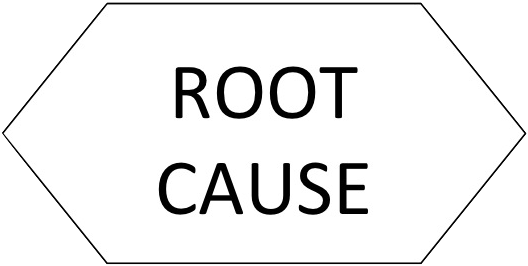Apply Root Cause Analysis (RCA) to discover how your Digital Asset Management can improve workflow.
“RCA is a tool designed to help identify not only what and how an event occurred, but also why it happened. Only when investigators are able to determine why an event or failure occurred will they be able to specify workable corrective measures that prevent future events of the type observed.” (Rooney & Heuvel, 2004)
A “post-mortem” or retrospective — a review of how well a project was executed — is a great time to share a Root Cause Analysis. Whether we like to admit it or not, these meetings are often de-prioritized due to our busy schedules. That’s unfortunate because problems have a tendency to re-occur. Similarly, limiting the meeting to a rudimentary discussion of any setbacks won’t address the issues either. I’ve attended too many of these events where blame is laid at the feet of a worker who is told to “do better next time”. I’m here to show you a way to improve workflow by addressing the root of a problem or near miss. Best of all Root Cause Analysis, when applied across a series of occurrences, will likely uncover areas DAM can improve your company’s efficiency. Much of the material covered in this post is taken from Rooney and Heuvel’s “Root Cause Analysis for Beginners”. You can find a link to the article under References at the end of this post. Let’s get started.
What are root causes?
- These are the specific underlying causes of an event. An investigator must be able to break down the causes.
- Root causes can reasonably be identified. In other words the solution should be worth your effort.
- They can be fixed by management. A cause that’s too general, such as a freeway pileup, cannot be managed.
- Effective recommendations can be made to address them. Solutions must be specific enough to address the causes. Telling staff to ‘do better’ is too vague.
- Collect Data
Observe workflow, review project management system notes, interview staff — including line managers and employees — to determine how work gets done. Pay attention to any ‘pain points’ that are mentioned. Spend some time focusing on these issues. Begin sorting them by specific events (or ‘near misses’).
Example: Video production is continually at risk of missing deadlines in spite of proper staffing. The work often comes to a head. Everyone scrambles, barely avoiding making serious mistakes.
Administer several rounds of interviews if you have to. Build context around the event. Who was involved? What happened? When did it happen?
- Causal Factor Charting
What contributed to the failures? How did the problems occur? The causes may seem obvious at first, but that’s just the tip of the iceberg. To many of us, it would seem logical to assume the issue lies with staff. Recommending further training and/or reminding staff to be more vigilant during their work day does not necessarily address the issue. Most mistakes don’t just happen, they can be traced to well-defined root causes.
Making a causal factor chart, a sequential diagram that describes the events leading up to an event, will help spell out the conditions under which the failure happened. Start by making a chart as early as possible in the process and fill in the detail as you go along. This will guide your data collection. Continue to flesh out the chart and collect more data until you feel the information is as complete as it can be. Your efforts will uncover causal factors, those human and system errors, that if removed would have prevented or reduced the severity of the problem.

Example: Jeff, a freelance editor saved master outputs to the wrong folder and named the edit sequence randomly. This effectively made the high quality video files unfindable and contributed to an increase of work for the assistant editor, Sam. The final export was redone and quality controlled (QC’ed). Jeff discovered that the assistant output the incorrect version of the video.
- Identify the Root Causes
Create a Root Cause Map to determine the underlying reasons for each of the causal factors. This diagram gives structure to the reasoning behind the process. Once the root causes are determines, you can set about finding solutions. I’ve broken down one of the causal factors below.

4. Recommend
Organizations must implement recommended changes if they want to avoid similar issues in the future. The end result of the process is a report that includes a causal factor chart as well as a discussion of the recommendations.Remember you must determine what the happened based on your data, then proceed to find out how it happened, finishing with why it happened.
Conclusion
Finding the root cause of a problem is key to preventing similar occurrences. I hope you’ll consider using RCA to streamline your workflow and avoid unnecessary mistakes. Applying this method to a specific events over time will help DAM professionals uncover patterns that may be addressed by their Digital Asset Management. In the above example, though overly simplified, the video department would benefit from a DAM system that can receive final outputs and automate their compression. Once ingested, the video file could be tagged as a ‘final master’ so that anyone with access could retrieve it again. Best of all, the file could be replaced if corrections or changes were made to the file. Unfortunately, a DAMS can’t page someone you are trying to find… yet. Perhaps in the future a DAM system will be able to alert users when it encounters a problem.
Reference
Rooney, J. J., & Heuvel, L. N. V. (2004). Root cause analysis for beginners. Quality Progress, 37(7), 45–53. Retrieved from https://servicelink.pinnacol.com/pinnacol_docs/lp/cdrom_web/safety/management/accident_investigation/Root_Cause.pdf





Leave a comment